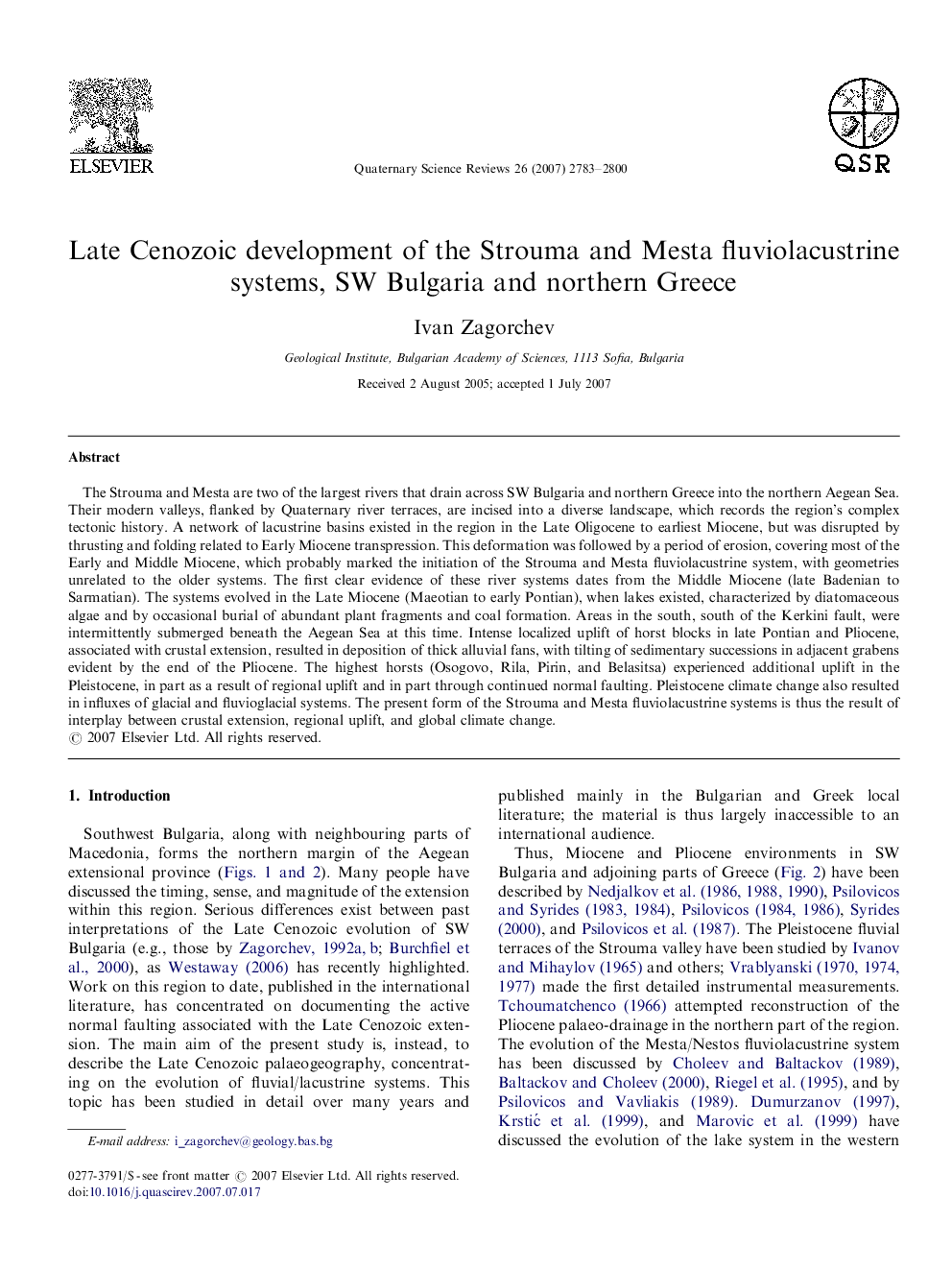| کد مقاله | کد نشریه | سال انتشار | مقاله انگلیسی | نسخه تمام متن |
|---|---|---|---|---|
| 6446887 | 1640961 | 2007 | 18 صفحه PDF | دانلود رایگان |
عنوان انگلیسی مقاله ISI
Late Cenozoic development of the Strouma and Mesta fluviolacustrine systems, SW Bulgaria and northern Greece
دانلود مقاله + سفارش ترجمه
دانلود مقاله ISI انگلیسی
رایگان برای ایرانیان
موضوعات مرتبط
مهندسی و علوم پایه
علوم زمین و سیارات
زمین شناسی
پیش نمایش صفحه اول مقاله

چکیده انگلیسی
The Strouma and Mesta are two of the largest rivers that drain across SW Bulgaria and northern Greece into the northern Aegean Sea. Their modern valleys, flanked by Quaternary river terraces, are incised into a diverse landscape, which records the region's complex tectonic history. A network of lacustrine basins existed in the region in the Late Oligocene to earliest Miocene, but was disrupted by thrusting and folding related to Early Miocene transpression. This deformation was followed by a period of erosion, covering most of the Early and Middle Miocene, which probably marked the initiation of the Strouma and Mesta fluviolacustrine system, with geometries unrelated to the older systems. The first clear evidence of these river systems dates from the Middle Miocene (late Badenian to Sarmatian). The systems evolved in the Late Miocene (Maeotian to early Pontian), when lakes existed, characterized by diatomaceous algae and by occasional burial of abundant plant fragments and coal formation. Areas in the south, south of the Kerkini fault, were intermittently submerged beneath the Aegean Sea at this time. Intense localized uplift of horst blocks in late Pontian and Pliocene, associated with crustal extension, resulted in deposition of thick alluvial fans, with tilting of sedimentary successions in adjacent grabens evident by the end of the Pliocene. The highest horsts (Osogovo, Rila, Pirin, and Belasitsa) experienced additional uplift in the Pleistocene, in part as a result of regional uplift and in part through continued normal faulting. Pleistocene climate change also resulted in influxes of glacial and fluvioglacial systems. The present form of the Strouma and Mesta fluviolacustrine systems is thus the result of interplay between crustal extension, regional uplift, and global climate change.
ناشر
Database: Elsevier - ScienceDirect (ساینس دایرکت)
Journal: Quaternary Science Reviews - Volume 26, Issues 22â24, November 2007, Pages 2783-2800
Journal: Quaternary Science Reviews - Volume 26, Issues 22â24, November 2007, Pages 2783-2800
نویسندگان
Ivan Zagorchev,